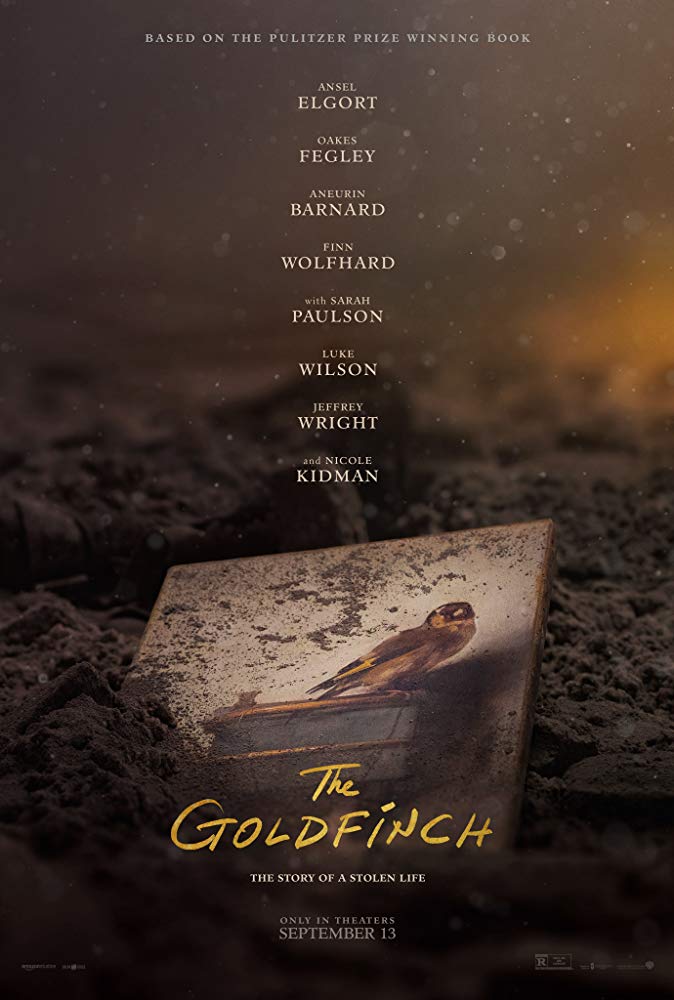By: Ryan Farrell, Staff Writer
The Goldfinch is a slow paced tragic character study. It portrays grief through the decades and how it shapes people. While the generational transitions feel repetitive, the time periods are distinguished effectively. This is further enhanced by a capable and consistent cast. Anyone looking for a unique cinematic character study should see this film in theatres.
The Goldfinch, an adaptation of Donna Tartt’s award winning 2013 novel, was released last Friday. This emotional drama is centered around a spectrum of grief, identity and guilt. This is the sixth film from director John Crowley, who created features such as Brooklyn (2015) and Boy A (2007). The main cast is multigenerational and bears significant talent. The Goldfinch isn’t afraid to take the viewer to dark places, which ultimately accentuates the film’s ascent to realism.
The Goldfinch is narrated by Theo Decker as he reminisces about his life-altering childhood tragedy. While in an art gallery, a terrorist bombing tragically took his mother’s life. After awakening in rubble, Theo pulls a painting from the destruction and smuggles it outside. Subsequent to this, Theo is taken in by the wealthy Barbour family. Mrs. Barbour cares for Theo as if he were a son to her. She proposes an official adoption, but it’s disrupted when Theo’s father Larry comes back into the picture. He brings Theo back to his home in Las Vegas, deepening Theo’s pain. Throughout the story, Theo narrates as if he is still processing this trauma. Although his adult life is certainly more preferred, Theo’s depression is apparent.
The Goldfinch constantly transitions from past to present in order to relay similar depressing tropes that Theo has carried with him throughout his life. This technique is used to gradually reveal information about Theo’s past and future. While it’s an effective storytelling technique, some of the transitions seemed abrupt. A significant amount of these transitions involve Theo either abruptly awakening or emerging out of water. The repetition of these scenes takes the viewer out of the film, which is disappointing since the overall storyline is engaging. The cinematography does give this film a unique visual style, especially when it uses camera work to reflect character tones.
The adult version of Theo is played by Ansel Elgort (Baby Driver) and the young variant is portrayed by Oakes Fegley. Elgort’s performance is particularly moving. Their dual casting will really convince the viewer that they’re one in the same; this is true for most of the characters with dual actors. Nicole Kidman however plays her character in both time periods. Finn Wolfhard adopts a Ukranian accent while playing the young version of Boris, Theo’s troublemaking childhood friend. It is interesting to see Wolfhard branch out in this direction. Overall the cast is what carries the emotional tone.


This is a movie which evokes restlessness in lives affected by
unyielding tragedy, but in a more somber note than Overcomer, inclines the viewer to empathize with Theo’s
stages of grief—especially as a young man returned to New York to escape a desertion of childhood literally in Canyon Shadows, Nevada, like his own unexpected ghost town, to work to compensate for overcoming his mother as his hometown ghost. Hobie, as a craftsman with a tie to the fatal event of Theo’s life, becomes his protegé and like a metaphor to the painting which Theo unknowingly has lost, helps Theo recover his own personal immortality to a sense of light. An excellent parable of victory over adversity…